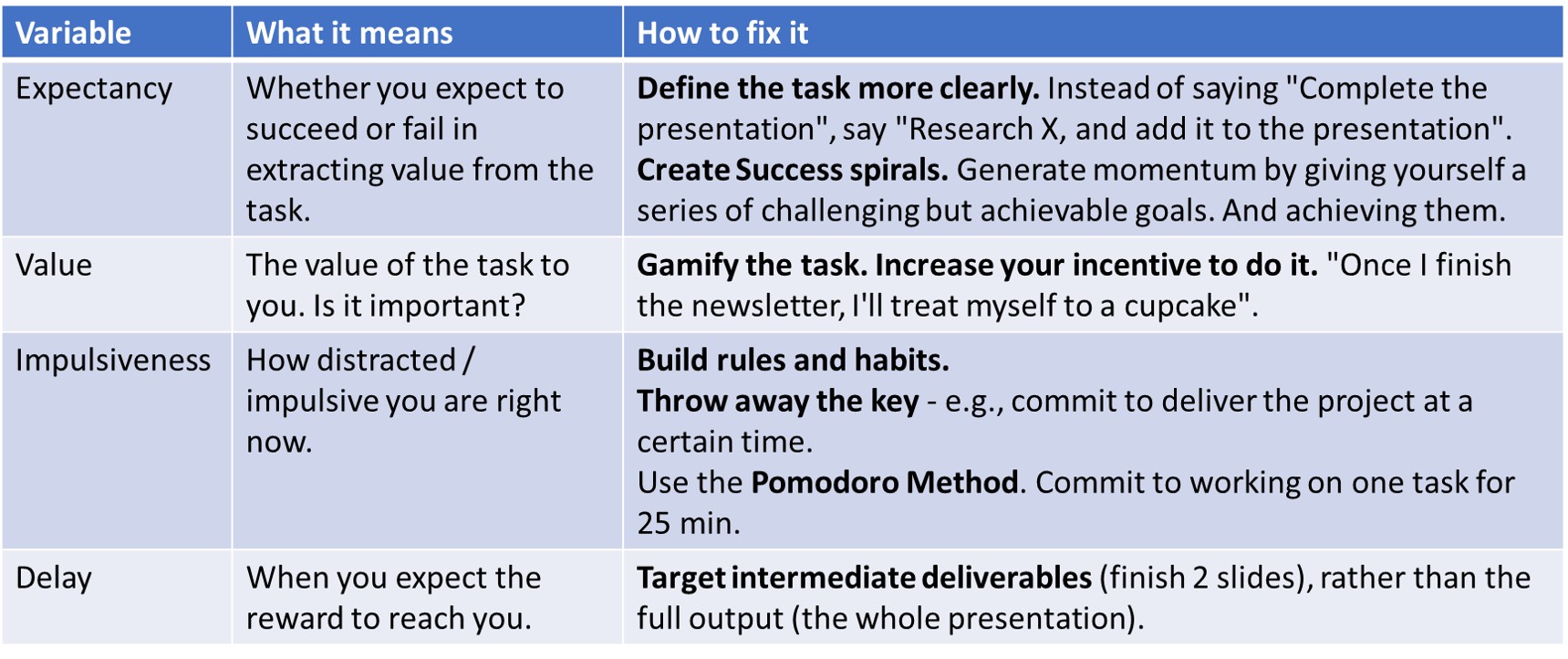What it is:
Piers Steel, in his book, outlines the Procrastination Equation:
Motivation = [Expectancy * Value] / [Impulsiveness * Delay]
That is the sum total of why we procrastinate. As Steel says:
Decrease the certainty or the size of a task’s reward – its expectancy or its value – and you are unlikely to pursue its completion with any vigor. Increase the delay for the task’s reward and our susceptibility to delay – impulsiveness – and motivation also dips.
Examples / how to use it:
How can we use this equation to beat procrastination?
- Increase expectancy of success: In essence, we need to increase our optimism regarding success in the task in question. How do we do that? By creating a spiral of success – break the task into sub-tasks, and start completing and ticking them off.
- Increase the task’s value: The more valuable something is to us, the more likely we are to do it. So, how can we increase the reward for completing something? Maybe we reward ourselves (with chocolate?) for doing something we’ve been putting off (filing taxes?). Or, we can “mix bitter medicine with sweet honey” – try to make the task more enjoyable (e.g., by having premium coffee while doing it.).
- Decrease impulsiveness: According to the book, this is often the biggest factor. How do we fix this? The only solution – set clear, measurable goals in advance. Commit now, to do later.
- Decrease delay: Usually, this is not in our hands. But if you can, artificially constrain the deadline for a task. Use Parkinson’s Law to get things done.
Rules to follow:
- Notice when you’re procrastinating.
- Guess which part of the equation is causing the problem. Fix it.
- If that doesn’t help, look at the other factors again. Repeat.
Further Reading:
- The Procrastination Equation [book]
- How to beat procrastination: A great summary of the book. The blogger has also shared his personal algorithm to defeat procrastination.
- A poster version (excellent) of how to use the procrastination equation.
Linked to: Parkinson’s Law
Filed Under: Productivity
